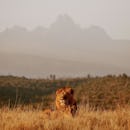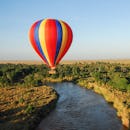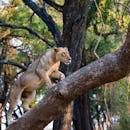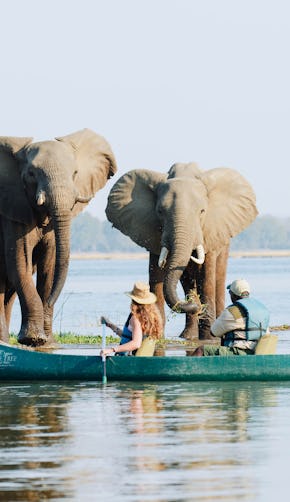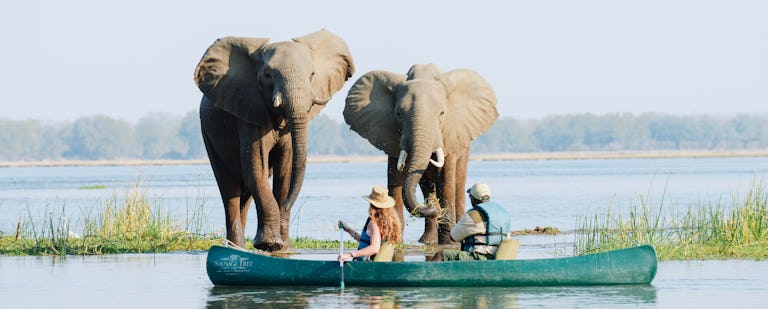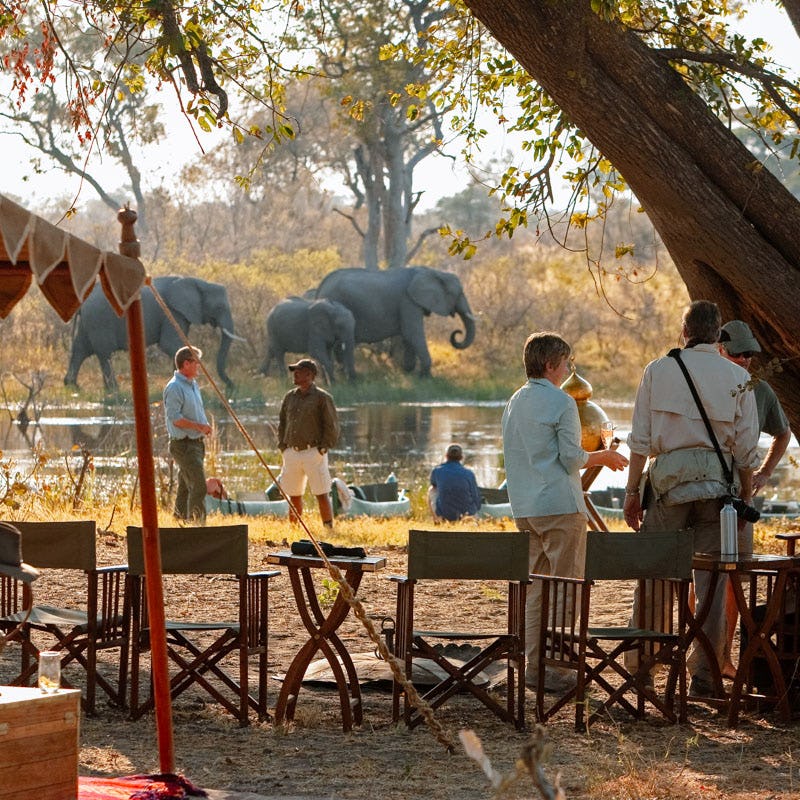The kings of the savannah, Kenya’s big cats provide some of the most thrilling sightings on any safari. This trio of felines, the lion, leopard and cheetah, are among the greatest predators on Earth and seeing them on the hunt can be fascinating, exhilarating and heart-wrenching all at the same time. We’ve rounded up the most interesting facts about the Kenya cats, what makes them tick and where to look for them while on safari.
Lions
When it comes to lion, Kenya is one of the best places to see them in the wild and witnessing them swagger across the plains or tiny cubs tumbling in the grass is a sight you won’t soon forget.
The facts
African lions are large creatures with adult males weighing between 150 and 250kg, and females weighing slightly less. The male lions also grow impressive manes that can reach 16cm in length, which often makes them appear larger and more threatening to rivals. In the wild, African lions usually live between 10 – 14 years, but they have been known to reach up to 20 years of age. Lions are the only species of cat to roar together and their spine-tingling roars can be heard up to 8km away, and reach 114 decibels. This is the lion’s primary method of communication, which they use to let their pride know of their whereabouts and ward off rival lions.
Social structure
Lions are highly social animals and move around in prides of various sizes, made up of one or more males, multiple related female lions and their cubs. Lionesses most often give birth to a litter of 3 cubs but they have been known to have as many as 6 young at a time, which are looked after by all females. Multiple females often have cubs at the same time. The cubs are born with spots, which is thought to help keep them camouflaged in long grass and they are kept hidden from the pride until they are strong enough to keep up.
On the hunt
Lions have a distinctive method of hunting, which is done by strategically moving in on their prey as a pride. They are primarily nocturnal hunters but are also known to hunt during the cool of the early morning or late evening. This is both because of the cooler conditions and to avoid detection under the cover of darkness – they may also hunt during thunderstorms as this masks any sound of their movements. Lions need a lot of food to keep them going and can eat up to 40kg (nearly a quarter of their bodyweight) in a single sitting.

Habits
Due to their diet consisting entirely of meat, lions need a long time to digest their food and regain their energy for the next hunt, so they can sleep and rest for up to 21 hours a day. During this time, they can often be spotted snoozing beneath the shade of trees and bushes, or amongst tall grasses. The movement of the pride is mostly dictated by the availability of prey and water as lions need regular access to both. The males in the pride spend a great deal of time patrolling their territory to protect it from rival males.
Where to find Kenya lions
According to most recent estimates, there are approximately 2,000 lions in Kenya and one of the best destinations to see them is in the iconic Masai Mara, which has one of the greatest concentrations of lion in Africa. The vast, open savannahs provide excellent sightings and when the Great Migration moves through, the hunts are both thrilling and gut-wrenching. Lions can be seen throughout most of Kenya’s national parks but other special mentions include Meru of Born Free fame and Samburu, where lions roam the acacia forests and dry plains, stopping to quench their thirst at the Ewaso Ng’iro River.
Lodges with top sightings
Located in the 55,000-acre Mara Naboisho Conservancy, the gorgeous yet understated Naboisho Camp offers off-roading and night drives, meaning there is the greatest chance to see prides of lion at any hour of the day. Sitting on the banks of Samburu’s Ewaso Ng’iro River, the Elephant Bedroom Camp offers outstanding sightings of lion (and cheetah and leopard) on epic game drives across the dusty landscape, while your private plunge pool awaits for a refreshing post-drive dip.

Leopards
With a piercing gaze and enigmatic manner, the leopards of Kenya certainly belong on your safari wish list. Seeing the signature swish of a tail and knowing you’ve managed to spy one is truly thrilling.
The facts
Most leopards are a pale golden colour with dark spots called rosettes, which are as unique as a human fingerprint. Adult males weigh between 60 and 90 kg, while females can weigh up to 45kg. Leopards are impressive creatures with the ability to run at a speed of 58km per hour, leaping 6 metres forward and 3 metres into the air. Leopards use vocalisations such as growls, roars and a rasping cough to communicate with others.
Social structure
Leopards are primarily solitary cats, with males and females only coming together to mate, before going their separate ways. The female can have two or three cubs at a time, following a gestation period of around 100 days. The mother hides the newborn cubs in thick bush or dens until they are 3 months old, when they are able to keep up with her movements. They remain with the mother until they are around 18 months old, when they are fully able to hunt and take care of themselves, setting off to establish their own territory. Leopards mark their territory by leaving scent marking like urinating on trees, scraping the ground and rubbing their faces on surfaces. A male leopard maintains control over its territory for between five and eleven years when, should he still be alive, he will be chased off by a younger male.
On the hunt
The African leopard primarily hunts from dusk to dawn but, interestingly, they are opportunistic hunters and feed on a wide variety of prey including antelope, warthogs, baboons, monkeys, rodents and fish. Leopards are quite accomplished swimmers! Leopards are among the strongest of Kenya’s predators with the ability to bring down game up to 3 times their body weight. Following a successful hunt, leopards often drag more substantial prey into a tree to keep it safe from scavengers and other big cats, allowing them to feed at their leisure over a number of days. Leopards actually do not need to drink water very often as they absorb the moisture from their prey.

Habits
During the hottest hours of the day, leopards enjoy lounging or sleeping in the shade of bushes and caves, or upon the branches of tall trees, keeping away from other predators. Handily, their long and very strong tails help leopards balance on tree branches and their patterned coat ensures they are camouflaged, making them one of the most elusive animals on a safari. This also gives them an ideal vantage point from which to spot prey – leopards also have excellent eyesight.
Where to find Kenya leopards
There is estimated to be between 1,000 and 2,500 leopards in Kenya, however this is difficult to determine exactly because of their elusive nature and the challenges of monitoring them accurately across highly varied habitats. Leopards can be sighted across Kenya, but one of the best places to see them is the Masai Mara, where they enjoy the rocky outcrops and dense riverine forests, especially along the Mara and Talek Rivers. The private conservancies in the Laikipia region also offer more exclusive game drives including nighttime safaris, which means an even greater chance at spotting leopards.
Lodges with top sightings
The intimate Loisaba Tented Camp enjoys stunning views across the grasslands of Laikipia, which you can explore with a whole host of activities – the game viewing is out of this world. Located on the confluence of the Sand and Keekorok Rivers, Sala’s Camp is your gateway to the Masai Mara and if you visit during the Great Migration, predators will be out in full force.

Cheetahs
Cutting a striking figure against the golden grasses of Kenya, cheetahs are one of the most impressive creatures you’ll encounter on a safari.
The facts
Cheetahs are the fastest land animal in the world and can reach speeds of 112 km per hour in just 3 seconds. Their lithe body makes this possible with long, nimble legs, an elongated spine, claws that have adapted to fiercely grip the ground and a long tail for balance. Their bodies grow to between 1.1 and 1.4 metres long, plus a tail of 65 – 80 cm, and adult cheetahs weigh between 34 and 54 kg. Cheetahs are very distinctive with their pale yellow, spotted coat and prominent black lines that curve from the inner corner of each eye. Cheetahs are vulnerable to attacks from larger predators and avoid confrontation; they are known to flee if threatened, especially to protect their cubs.
Social structure
Cheetahs are usually seen in groups consisting of a mother and her young, siblings or a coalition of males, however, females tend to be solitary. Females give birth to between 2 and 8 cubs at a time, which she nurses in a lair hidden by tall vegetation until they are between 16 and 24 months old. By this time, they are able to look after themselves and hunt.
On the hunt
In order to avoid competition from other predators, cheetahs usually hunt during the day, which is unique among Kenya’s big cats. Cheetahs have outstanding eyesight, which they use to scan their surroundings before stalking their chosen prey, before setting off in a sprint. This uses a great deal of energy so the chase is usually limited to 200 – 300 metres and lasts less than a minute. Their prey includes rabbits, warthogs, springboks, gazelles and birds.

Habits
Males are more territorial than females and will mark their area with urine and feces in order to assert their ownership to other males. Cheetahs don’t roar as lions do but instead communicate with other sounds that convey different meanings such as purring when content, chirping to locate each other and growling when threatened. They also communicate through posture, facial expressions and tail positioning, which your guide will point out to you. After a hunt, cheetahs are extremely tired and tend to seek shade under trees or in tall grass, where they can rest.
Where to find Kenya cheetahs
Classified as vulnerable on the IUCN Red List, there are about 1,300 cheetahs in Kenya. The setting for the BBC’s Big Cat Diary, the Masai Mara is one of the best places to spy cheetah in their element, prowling across the wide open plains. Laikipia is also a fantastic region for seeing cheetah where conservation projects are hard at work to protect these beautiful felines.
Lodges with top sightings
With stunning views of Mount Kenya in the distance, Ol Pejeta Bush Camp offers an inside look at Laikipia’s conservation projects and the chance to join in as well. Set within the 74,000-acre Mara Conservancy, Offbeat Mara Camp is as intimate and unobtrusive as they come, and the guides really know where to look for Kenya’s big cats.
Kenya’s famous big cats are as fascinating as they are fierce, and locking eyes with one of them as you sit spellbound is an unforgettable experience. For more on the incredible wildlife of Kenya, both large and small, read our blog here.














